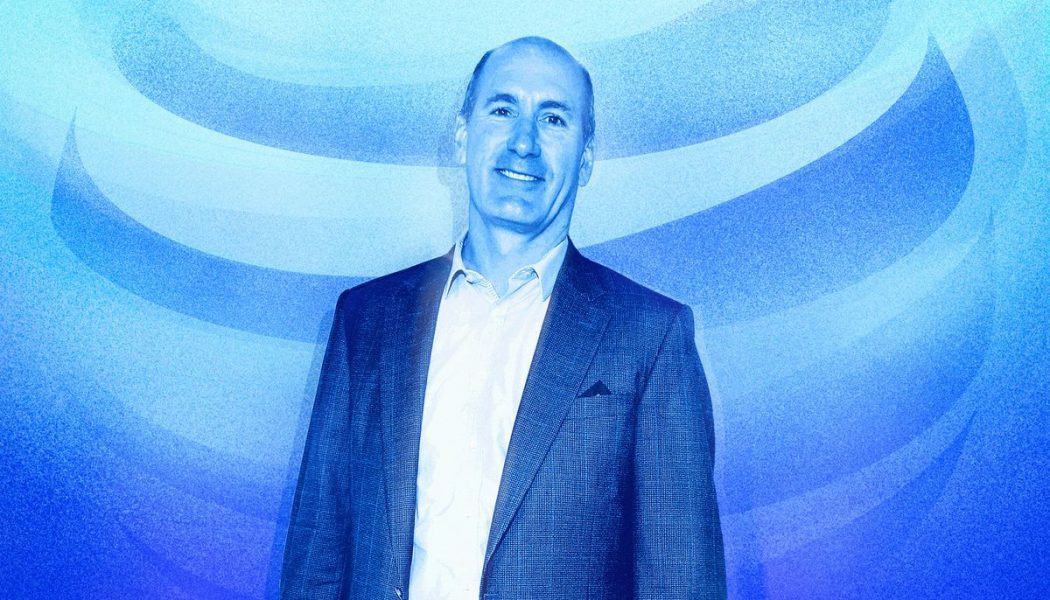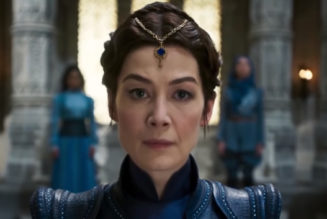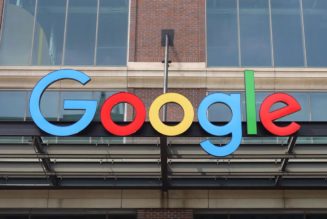There’s been a sweeping change across the United States’ biggest wireless carriers.
Over the past decade, the leaders of Verizon, T-Mobile, and AT&T oversaw a shift from simplistic feature phones into the era of smartphones and streaming. After early iPhones and Android devices strained their cellular networks, the major carriers gradually evolved their infrastructure to provide the robust, nationwide LTE coverage on offer today. Unlimited data plans came, went, and came again, and the carriers eventually sought to carve out their own stake in content and media, to varying degrees of success.
But two of the telecom CEOs who oversaw that shift — Lowell McAdam at Verizon and John Legere at T-Mobile — have now left (McAdam in July 2018 and Legere in April 2020), and AT&T’s Randall Stephenson will step down next month.
The new faces of these powerful companies are Hans Vestberg, Mike Sievert, and John Stankey, and they’ll be taking on some herculean tasks of their own. Topping that list is the ongoing buildout of 5G technology across the United States. They’ll also take another shot at something their companies have continually struggled to do: break into the media and entertainment industry.
With the transition to a new collection of executives almost complete, here’s a look at who’s in charge now, what their plans are, and the problems that lie ahead.
:no_upscale()/cdn.vox-cdn.com/uploads/chorus_asset/file/19952818/acastro_200430_3996_att.jpg)
When AT&T acquired Time Warner in 2018, the company gave a veteran executive John Stankey the task of combining the telecom with one of the biggest entertainment conglomerates in the world. Bridging the two would be a challenging job — and, as he told The New York Times, “if I don’t do that job well, I won’t be here very long.”
Two years later, Stankey is about to become AT&T’s CEO. Last month, he was selected to replace longtime chief executive Randall Stephenson who will step down on July 1st.
AT&T has a big couple of years ahead of it building out its 5G network. After deservedly being excoriated over its bogus, misleading “5G E” branding, the company is now focused on expanding actual 5G service at a rapid pace, both through high-speed millimeter-wave for high-traffic areas and slower low-band spectrum for covering large swaths of people.
But the integration of Time Warner — now WarnerMedia — into AT&T is the company’s core bet: AT&T’s strategy is to make its own wireless service more appealing by offering discounted movies and TV shows (think bundled HBO), while also collecting data from people using those services to study what people are watching. It’s meant to create a symbiotic cycle, with the two businesses continually bolstering one another.
Stankey has largely been seen as the person behind AT&T’s major acquisitions, which speaks to why he’s been put in charge. Under his supervision, AT&T acquired DirecTV and moved into the streaming space with the launch of DirecTV Now (to mixed results so far). He also oversaw the $31 billion acquisition of the media conglomerate that housed HBO, Turner, and Warner Bros.
HBO Max is the center of everything Stankey and his team have been building toward. The upcoming streaming service is meant to let AT&T start to combine its large customer base with WarnerMedia’s subscribers, says Michael Smith, a professor of information technology and marketing at Carnegie Mellon University who has tracked AT&T’s merger and acquisitions strategies for years. The merger gives AT&T more control over ownership and distribution of content than competitors like Verizon and T-Mobile, which offer bundles of third-party streaming services to customers but largely don’t have appealing content of their own.
“It’s a huge bet that owning the distribution and the content is going to give them a power they wouldn’t have if they just owned one or the other,” Smith told The Verge. “Delivering [WarnerMedia] content over the pipes that they also own for better or worse is something that no one in the industry is going to have an easy time copying.”
Not everyone is on board with that bet. Activist investor group Elliott Management has criticized AT&T’s pricey acquisitions, and former Time Warner CEO Jeff Bewkes has suggested a move like the one AT&T was making could run into issues similar to the ones AOL faced when it acquired Time Warner.
“Narrowing either the distribution for your content or narrowing the source of content for your distribution platform is a fairly suspect premise,” Bewkes told CNBC in 2019.
Stankey is fighting an uphill battle. AT&T has seen roughly 17 percent loss in cable and satellite customers in the last four years. Price hikes have led to other parts of AT&T’s cable business to start bleeding customers. That’s on top of billions of dollars in missed revenue occurring over the last couple of quarters in AT&T’s WarnerMedia division because of the fewer titles it’s licensing out to competitors like Netflix and increased investment in HBO Max.
“We need to make this move to compete with companies that are incredibly strong and capable like the Googles, Amazons, and Apples of the world — and so we’re playing big,” Stankey told Bloomberg in 2019.
There’s a chance that HBO Max fails. The market is filled with streaming services, and every corporation under the sun seems to want to launch one. Amazon, Netflix, and Disney have already found large audiences, and it’s possible the streaming space is only going to produce a few big winners, argues Kester Mann, an analyst and director at London’s CCS Insight firm. AT&T could already be too late.
But Stankey’s eye has long been on the shift to streaming video, and Smith argues AT&T is moving in the right direction to catch it. If you “believe that mobile consumption is the future,” Smith says, “which clearly AT&T does, then you’re going to need a channel to deliver.”
:no_upscale()/cdn.vox-cdn.com/uploads/chorus_asset/file/19952821/acastro_200430_3996_verizon.jpg)
Verizon isn’t very interested in a seat at the flashy streaming video table that AT&T is fighting to win. When Hans Vestberg was chosen as CEO in 2018, taking over for Lowell McAdam, it sent a clear message: Verizon was more focused on its wireless business than trying to break through in the film and television industry.
Vestberg was a network guy through and through; he led Ericsson for a handful of years as CEO, though he was eventually ousted for subpar results. Undeterred, he joined Verizon as chief technology officer in April 2017 and managed to land the CEO job 16 months later.
Verizon’s reputation has always been directly tied to its reliable network and the vast coverage it provides. And in exchange for that superior service, Verizon has traditionally charged more money than its rivals. But as AT&T, T-Mobile, and Sprint made strides in 4G LTE deployment over the last decade — T-Mobile’s John Legere started to push against his competitors’ more frustrating policies — Verizon eventually began competing more aggressively.
As things stand today, Verizon’s 5G network offers blazing-fast download speeds but worryingly sparse coverage. The company has focused largely on millimeter-wave technology, which blows away LTE in sheer performance, but it hasn’t yet delivered on the second phase of that 5G plan to solve for the coverage dilemma. This is among Vestberg’s top priorities as T-Mobile and Sprint try to get the upper hand on 5G availability.
While that may be Vestberg’s top priority, Verizon does have a media play, too — though Vestberg has largely been scaling down the major swings taken by his predecessor.
Verizon spent years acquiring various media giants in an effort to build its own empire. It bought AOL in 2015 for $4.4 billion, giving it publications like HuffPost, TechCrunch, and Engadget, and it acquired Yahoo in 2016 for $4.8 billion, adding a widely visited homepage, nascent video business, and Tumblr (which it has since sold).
The nearly $10 billion in acquisitions were designed to return billions of dollars in revenue via advertising. A big part of the reason that Verizon acquired AOL was because of its ad tech platform, and under Vestberg, Verizon has continued to build out ad tools that take advantage of its control over both AOL and Yahoo.
“Verizon doesn’t have a WarnerMedia, but it does have its own portfolio of websites that generate a fair share of advertising revenue,” Mann told The Verge. Vestberg has said this venture’s initially disappointing performance is starting to turn around. He recently told Bloomberg, “We’re happy with the assets. They’re coming from double-digit declines to very small declines.”
Vestberg has avoided attempts to join the increasingly competitive content space, especially after Verizon’s earlier failures. Under McAdam, Verizon invested hundreds of millions of dollars into its own streaming service — Go90 — designed to attract teenagers and 20-somethings spending more time on their phones. McAdam wanted to turn “Verizon’s media efforts into a $5 billion-plus business,” Fast Company reported in 2016.
But Go90 failed spectacularly. After three years of fighting to make some kind of dent in the mobile content space, Go90 was stripped for parts and distributed among various properties under Oath, Verizon’s digital umbrella that combined AOL and Yahoo. It shut down the day before Vestberg took over as CEO.
Under Vestberg, Verizon appears to be more interested in tie-ins that complement its network. The company acquired BlueJeans, which makes videoconferencing software, last month. It’s had a successful partnership with Disney since late 2019, offering free Disney Plus to subscribers, which Verizon says has helped gain and retain customers. It’s also partnered with Apple to offer access to Apple Music to make its unlimited plans more appealing. Verizon is also working with Amazon to sell a 5G cloud computing service.
That network-first story worked for Verizon in the past, and it’s one Vestberg keeps telling. “The first piece is of course the network,” Vestberg told analysts last year, according to RCRWireless News. “We’re building the intelligent edge network … That’s where you make the selection with the customer.”
:no_upscale()/cdn.vox-cdn.com/uploads/chorus_asset/file/19952823/acastro_200430_3996_tMobile.jpg)
With its Sprint acquisition complete, T-Mobile is now a wireless carrier with around 100 million customers, ready to take on longtime rivals Verizon and AT&T on more even footing than ever before. Once the underdog wireless carrier, T-Mobile is finally stepping into the big leagues.
Seeing the shift through is new CEO Mike Sievert, T-Mobile’s former chief operating officer and the right-hand man of his predecessor John Legere. Sievert was always at Legere’s side through the company’s various Uncarrier announcements and trumpeted the same enthusiasm as T-Mobile tried to break the industry mold — just without Legere’s vulgar language and brash attitude.
Prior to joining T-Mobile, Sievert had bounced around companies, including IBM and E-Trade, and one curious bit of history you might not know is that he had a significant role at Microsoft during the Windows Vista days. Here’s a long transcript of him hyping up the beleaguered OS in 2006. (“Windows Vista is the best operating system we’ve ever conceived.”)
Sievert has trusted lieutenants like Neville Ray, T-Mobile’s president of technology, helping guide the carrier’s 5G rollout. T-Mobile made numerous promises to help get the Sprint merger over the finish line, including improved rural coverage, free 5G for first responders, and a pledge not to increase consumer plan prices for at least three years, and Sievert will have to see those through.
Even before T-Mobile’s historic merger with Sprint, it had the most sound 5G strategy of all US carriers, based on a combination of high-speed millimeter-wave with mid-band and low-band spectrum for a comprehensive next-generation network. The Sprint deal solidified that plan, and customers are already seeing the fruits of the two carriers coming together on a technical level. T-Mobile claims Verizon and AT&T won’t be able to match its three-pronged approach.
Sievert is still new in the position, but he isn’t as interested in the “subscription-palooza” that AT&T is playing or investing in a portfolio of online brands like Verizon. T-Mobile wants to enter the pay-TV market and partner with other streamers to try and build its own growing customer base, especially as the company touts its 5G network growth plan.
Like Verizon, T-Mobile has mostly used media as a way to bring people to its network — offering subscribers access to services they already want, rather than providing its own entertainment. The company has, for years, waived data usage for approved music and video streaming services. It’s also partnered with Netflix to offer the streaming service for free to customers with more than one line. Although the deal added substantial costs to T-Mobile, it helped secure and keep more customers, according to The Wall Street Journal.
T-Mobile is starting to build out a more straightforward entertainment venture, though. TVision is a cable-like streaming video platform that T-Mobile has started pitching to residential customers and is designed to offer an alternative to traditional cable packages. The service includes a streaming box, which could help it compete against digital-first services like YouTube TV, Hulu TV, and Sling that may be harder for customers who haven’t yet left cable behind.
“We think there’s a more nuanced role for us to play in helping you get access to the great media brands out there that you love, and to be able to put together your own media subscription in smaller pieces, $5, $6, $7, $8 at a time,” Sievert told investors in an April 2019 earnings call.
Sievert takes over a T-Mobile with incredible momentum. But there will also be downsides for him to navigate: retail store closures and layoffs are inevitable. As a leader, he faces the challenge of trying to stir the same passion from employees and customers that Legere did — without it coming off as phony. The new T-Mobile is a behemoth and far from the scrappy contender that took bold steps to turn its fortunes around.









